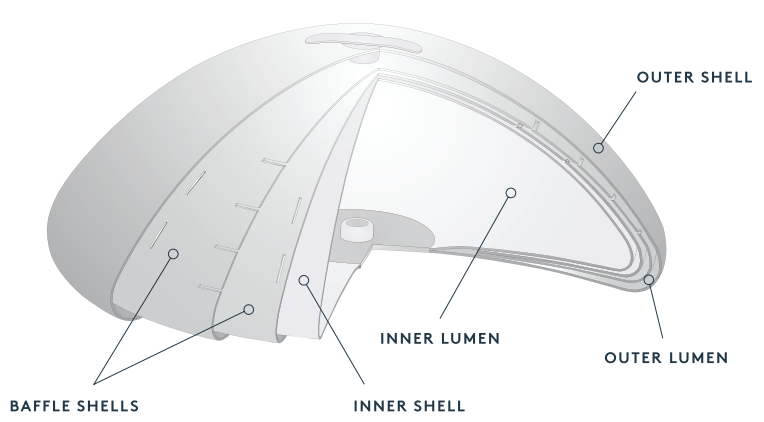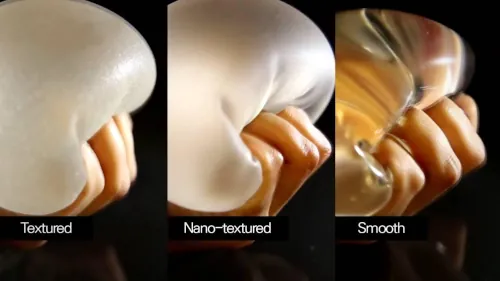Breast Implants - Textured V/S Nanotextured

Maybe she's born with it? Maybe it is the plastic surgeon!!
For centuries, women have strived to have that enviable, effortless beauty, and put in all efforts to achieve that. However, if it looks unnatural, it is done wrong- be it make-up, smiles, or Breast augmentation.
Breast Implant Surgery
After arriving at the major decision of going ahead with Breast augmentation, also popularly known as breast implant surgery or boob job, it is rather simple; look up for an Aesthetic surgeon, check the online ratings and reviews, read a dozen testimonials and viola you have a decision! Right? Well, only partially because even purchasing cereal is not a simple decision anymore!! Before you finalize, you have to decide for the implant and there are options galore! The choices to navigate, are:
- Types of Implant- Saline, silicone, structured saline, gummy bear, soybean oil, hydrogel and Titanium coated (yes you read it right, although still in its preliminary stages of testing).
- Location of Incision: Inframammary, peri- areolar, trans axillary, trans-umbilical, transabdominal
- Implant pocket placement: Subglandular, subfascial, subpectoral, submuscular, pre-pectoral or subcutaneous.
The good news is that there is a sufficient number of choices, the even better news is there is a procedure to make an informed decision, and the best news is that the person seeking it, is in control of it.
Development of Breast Implants
Owing to the natural appearance achieved post-surgery, versatility in size and shape, safety and biological inertness, silicone is the most used material in breast implants. The fifth-generation breast implants, or the present-day breast implants were developed over five decades back; 240 styles and 8300 models of silicone breast implants have been developed since the first implant, developed by Dow Corning in 1963.
To understand what necessitated the need for silicone implants to go from soft to textured and textured to nano-textured, it is imperative to learn what goes on at a macro as well as histological and cytological level inside the body.
What Happens at a Cellular Level Folloing the Placement of a Breast Implant
After an implant is placed in the pocket, it kicks off an immune response from the body. This is a natural process as the body recognizes the implant as a foreign object and the immune cascade that follows results in the formation of a scar in the form of membrane around the implant, which is to wall-off the "foreign object". This membrane is called the scar capsule, which is a fibrotic tissue that surrounds the implant. In the majority of cases, this scar membrane is soft and pliable and is not even felt or palpated by most women.
The basic structure of a silicone breast implant comprises an outer silicone shell, encapsulating a condensed gel interior. The outer shell is firm and resilient to prevent rupture or puncture.

Traditionally the outer silicone shell was smooth and shiny, which is still a popular choice for candidates who have small breast tissue naturally or are very thin or the implant is placed above the muscle. Smooth shell prevents rippling of the overlying skin owing to its evenness; it does not adhere to the surrounding tissue.
For textured implants, the scar tissue grows into the surface of the implant, causing almost a mechanical lock. As a result, the implant integrates into the body and the problem associated with sub-pectoral implant of slippage, distortion of implant and uncoordinated unnatural movement of the overlying breast tissue is alleviated. Part of the idea of developing textured surfaces is to manage the reaction to the implant and to get it to incorporate and feel and look natural and behave like a natural breast.
Capsular Contracture
After the implant placement, if due to any reason there is a chronic inflammation of the implant pocket, the scar capsule contracts or thickens, that indurated tissue then squeezes the implant, thus resulting in what is the most common complication of breast augmentation or reconstruction called Capsular contracture.
Capsular contracture depending on its severity can cause pain, shifting, distortion, and hardening of the reconstructed breast.
The severity of capsular contracture ranges from soft and barely noticeable to indurated tissue around the implant. This scar membrane is graded by the Baker scale:
- Grade I: The capsule is pliable, and the breast is soft and normal in appearance.
- Grade II: Induration or hardening upon palpation, but normal appearance.
- Grade III: Mild distortion and induration of the breast OR shifting of the implant due to the fibrosis of the contracture resulting in significant distortion of the breast.
- Grade IV: Severe distortion of the breast and shifting of the implant accompanied with redness and pain.
Breast Implant Associated Anaplastic Large Cell Lymphoma
No sooner had the perfect breast implant been achieved with the introduction of textured implants, it was discovered that the textured breast implants may be associated with anaplastic large cell lymphoma or BIA-ALCL or just ALCL.
It is particularly important to note that this is NOT a type of breast cancer. It is an uncommon, slow growing T-cell lymphoma, seen in the fluid and scar tissue (fibrous capsule) around the implant. It often presents as unilateral seroma or effusion that is fluid collection limited to the capsule of a textured-surface breast implant.
Although it is slow growing, it has the potential to invade locally by forming a mass or in rarer cases grow through the scar membrane into the parenchyma or soft tissue of the breast and in some cases, like any neoplasm, metastasize into the regional lymph nodes.
A course correction is done by Explantation and complete capsulectomy, which removes the disease and confers an event free survival without the need of chemotherapy or radiotherapy.
Nano-Textured Implants- the Goldilocks Zone?
These concerns led to brainstorming, research, and development, bringing the current trend of Nano texturization of biomaterials. A breast implant subtly textured such that the implant feels like a smooth implant, to reduce the risk of capsular contracture and occurrence of BIA-ALCL while at the same time allowing the scar capsule to grow into the implant surface to immobilize it and hold it in place achieving the natural look and movement of the breast.
Textured versus Nanotextured Implants

STUDY 1:
A clinical trial aimed to investigate the subsequent capsule formation and the probable capsular contraction with the three types of implants that are smooth, macrotexture or conventional textured and nanotextured implants, was conducted in vivo in 48 Wistar rats.
After four and twelve weeks the histological, immunohistochemical and Western blot examination to check for capsule formation, thickness, and movement of the implant revealed that Nano textured implant had the minimum foreign body reaction, as a result of which the capsule formation was reduced.
Although this meant that there was an increased movement of the smooth and nanotextured implants as compared to the macro textured implant; at the same time the collagen fiber density and myofibroblasts activity was significantly reduced in nanotextured implants, therefore the capsule thickness at twelve weeks was decreased, therefore implying a probable reduced incidence of capsular contracture.
STUDY 2:
Clinical study, conducted by Paolo Montemurro and Vincent K S Tay, published in the Aesthetic Surgery Journal, with the objective of a comparative analysis of nanotextured implants versus conventional textured implants and to study the etiopathology of initial complications.
Out of a total of 415 subjects, 38.8 % utilized nanotextured implants and constituted one group while the remaining 61.2% that utilized conventional textured implants, constituted the second group. Each group was further divided into three chronological subgroups namely period 1, 2 and 3. The study was conducted by comparing the parameters of complication rates, specific implants, surgical techniques while factoring in participating candidates' characteristics.
The most common complication for textured implant was capsular contraction which increased from 0.8% at 1 year to 3.5% on overall follow-up.
It was also observed that the overall preference for nanotextured implants almost doubled, from 26.9 % to 54.5%, over the course of 26 months from period 1 to period 3. The most common complication for nanotextured implants was "bottoming out" or moving. The rate was 6.8% in period 1 follow up and went up to 8.7% by period 3.
The inference derived across the chronological subgroups was that the rate of complication reduced for nanotextured implants by period 3.
Conclusion:
After enduring almost six decades of different spells of gloom and bloom, innovations in implant manufacturing and deciphering the mechanism of bio-integration of implants, have helped tide over the various challenges and contributed to the state-of-the-art technology of bioimplants.
Human bodies function on a fine balance, and sometimes even idiopathic causes can tip the scales to the point of an inflammatory response even to its own tissues, manifesting as autoimmune or acute allergic reactions. Therefore, even introducing bioinert implants is not without the associated risks. Since nanotextured implants have proven to address both the most important concerns of capsular contracture and BIA-ALCL, it is a promising break-through that is well received innovation.
Medical and Aesthetic science is a field in constant flux. Until the next generation of breast implants that are pico textured, make the current nanotextured implants completely obsolete, Nanotextured breast implants seem to be the better alternative to textured implants. A learning curve is just an inevitable transition, with any new medical or surgical device.
The success of any recently developed method rests upon preoperative planning, perioperative techniques and precautions and postoperative care employed.
In our endeavor to achieve the best results for each and every case, IndiCure encourages patients to ask as many questions as they mind before undergoing any plastic surgery procedure. If you have any questions about the breast implants or wish to speak with our doctors before undergoing the breast implant surgery, write to us at info@indicure.com or Call/WhatsApp us at +91 9320036777.